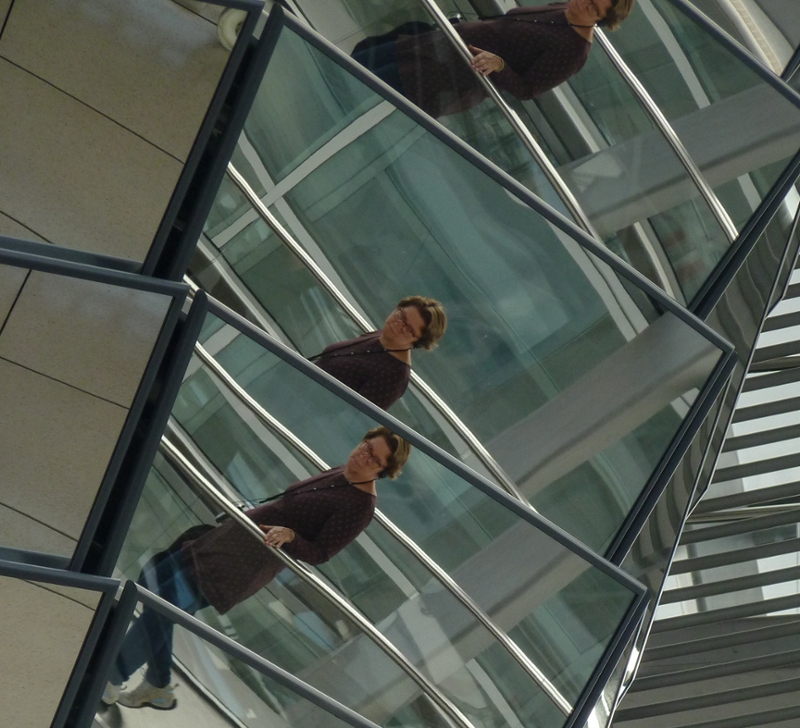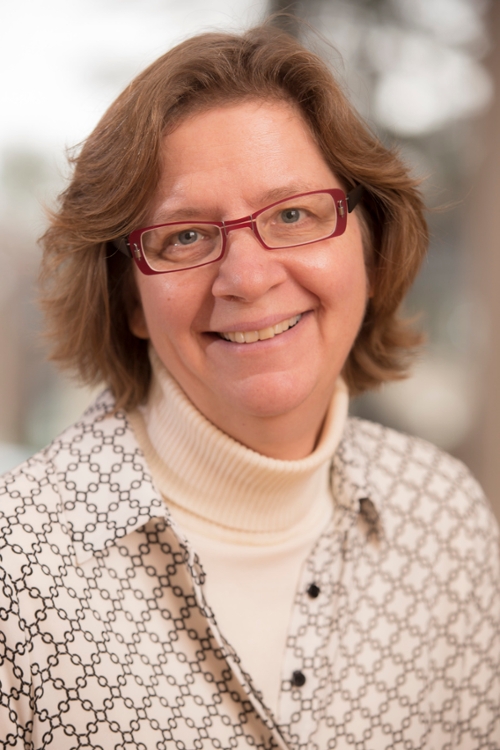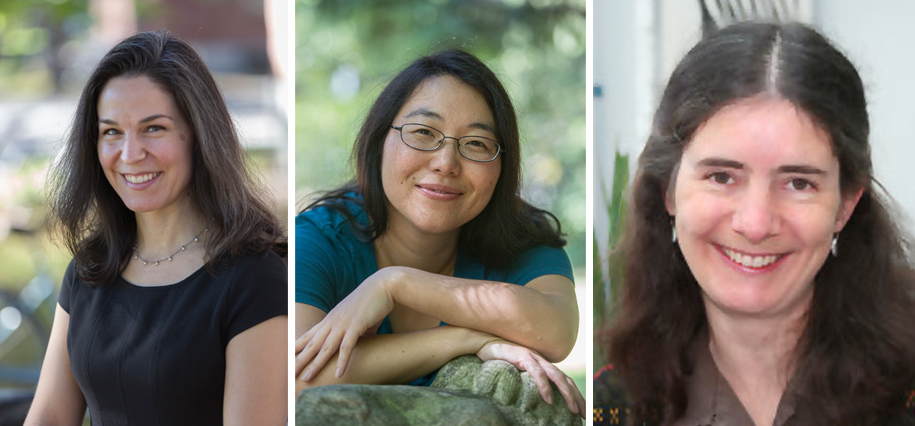More than Just a Noise: How Sound Can Advance Quantum Computing
By Tom PorterProfessor of Physics Madeline Msall is really into sound: not just the noise it makes, but the use of sound waves as a tool to measure and control electronic systems. Among the experiments she's been involved with are dark matter detection schemes that use acoustic waves to attempt to detect the presence of the mysterious material thought to make up most of the matter in the universe.

Madeleine Msall in Berlin. She spent the 2017-18 academic year working on the SAW project at the Paul Drude Institute for Solid State Electronics. Photo: Frank Mauceri.
For her latest research, Msall has moved away from astrophysics and back down to earth, using surface acoustic waves (SAW) to develop vastly more efficient computing devices than we have at the moment. To get technical, she's working on how sound waves can be used to control digital switches for quantum computing.
 "To be clear, this has nothing to do with the everyday, normal tasks that we all use computers for,” she says, “like sending emails, watching movies, et cetera. This is tackling a very specialized set of problems, where we can encode information in a quantum system and manipulate it into a simple-to-read result. Quantum computing is a difficult concept to understand," Msall admits, "but the exciting thing about it is that we hope it's going to allow us to solve problems that would require too much computation on a regular computer."
"To be clear, this has nothing to do with the everyday, normal tasks that we all use computers for,” she says, “like sending emails, watching movies, et cetera. This is tackling a very specialized set of problems, where we can encode information in a quantum system and manipulate it into a simple-to-read result. Quantum computing is a difficult concept to understand," Msall admits, "but the exciting thing about it is that we hope it's going to allow us to solve problems that would require too much computation on a regular computer."
To do this means developing the ability to preserve the quantum state of single electrons, she explains: "We’re trying in the least disruptive way to control individual electrons, whereas in a regular computer we have stream of millions of electrons and you can’t address a single one."
Central to achieving this, she said, is the creation of an acoustic resonator, where sound waves can be focused down to the nanoscale dimensions of a single electron trap, known as a quantum dot. “A big part of my research is thinking about how to make that resonant space for the waves as they travel over the surface. The laws of physics that govern it are not the sexiest, nor is the technology, but to apply them appropriately on this fine scale is a lot of work.”
"Quantum computing is a difficult concept to understand, but the exciting thing about it is that we hope it's going to allow us to solve problems that would require too much computation on a regular computer."
Msall spent the 2017-18 academic year in Germany, working with other scientists on the SAW project at the Paul Drude Institute for Solid State Electronics in Berlin. “It’s a well-funded project,” said Msall, “because of the commercial potential of this kind of technology, particularly in the communications field. Cellphone technology, for example, relies on SAW devices to filter and clarify soundwaves as they go into the microphone or come out of the speaker.”
There is still a long way to go in this research, says Msall, but she is upbeat about the future. “When you think of the advances of the past three decades and how we’ve been able to shrink down our computers and increase their power, you recognize that once we figure out the principles from this SAW research, we should be able to scale it up fairly rapidly into a robust and workable system.”
Msall's research in Germany was funded through a Faculty Research Visit Fellowship from the DAAD (the German Academic Exchange) and a Bowdoin Faculty Leave Award.



